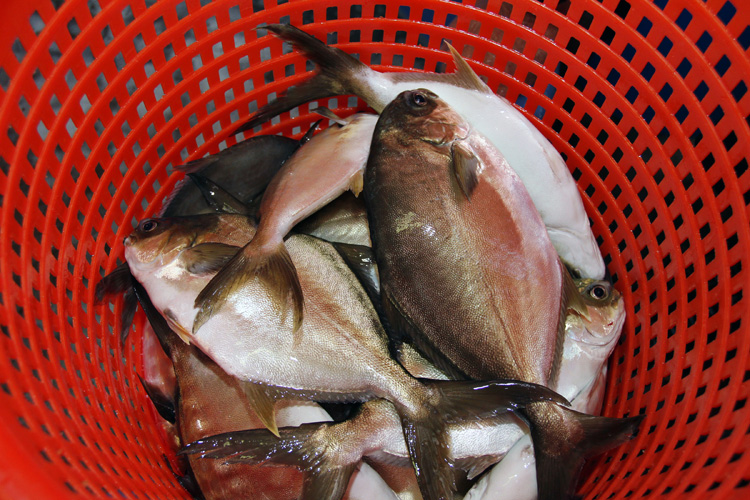
Besides providing endless hours of fun for anglers along the island’s beaches, Florida pompano are delicious to eat. Buying them at seafood markets can cost as much as $20 per pound. And for more than two decades, fish farmers in Florida and beyond have been trying, with little success, to grow and sell them at a profit.
Enter Dr. Paul Wills, associate director for research at Florida Atlantic University’s Harbor Branch Oceanographic Institute in Fort Pierce, who’s been working on pompano aquaculture for more than 12 years.
Wills expects to complete a key experiment next month as part of a three-year study aimed at overcoming the last hurdle to commercializing what could someday be a multi-million dollar industry in the Sunshine State. The study was funded by $700,000 grant from the National Oceanic and Atmospheric Administration’s Sea Grant program and matched by FAU.
“The results we’re going to get are going to be very important to producers in Florida and throughout the country,” Wills said. “What we learn from pompano will apply to other species.”
Which is a big deal, considering that more than half of all seafood consumed globally and in the U.S. is farm-raised, and experts expect that percentage to grow as wild seafood stocks decline.
Wills and others have already induced pompano to spawn in captivity, and have raised them successfully in land-based, re-circulating tanks from larvae to market-sized entrees of about 1 to 1 1/2 pounds – a process that takes about a year. But the oval-shaped skippers eat a lot while they’re growing, and right now the cost ratio averages about two pounds of feed to a pound of fish meat, which is not profitable for commercial growers.
So Wills’ project concentrates on different types of feed – from the rotifers, or tiny crustaceans consumed by post-larval fish, to brine shrimp as they grow, and finally pellets made of fish meal, soybeans, and other products that nourish them until they are harvested.
“We’ll be looking at specific ingredients to see how fish use them and improve the efficiency of how they use their diet,” Wills said. “The study [covers] the entire life cycle from egg to harvestable product. Ultimately, the farmer can start taking advantage of these technologies to improve their profitability.”
Wills said he will release his data to the public in about two years in workshops and manuals so farmers won’t have to wait for scientific peer-review to be completed.
Joe Cardenas, for one, is eager to see those results.
The former West Palm Beach banker plans to open Aquaco Farms this summer in an 18,000-square-foot warehouse on eight acres adjacent to the lagoon near Harbor Branch for the express purpose of growing pompano to dinner-plate size and selling them wholesale for between six and seven dollars per pound–hopefully at a 30-to-40 percent profit. If Cardenas and his handful of employees succeed, they will be the first in Florida.
“I’m approaching it with eyes wide open,” Cardenas said. “The industry is so young in Florida.”
Armed with $3 million raised from private investors, Cardenas plans to start with 30,000 pompano fingerlings purchased from ProAquatix– a local company that is Florida’s only commercial source of juvenile pompano and eggs produced by its in-house brood stock.
ProAquatix’ Eric Wagner says producing food fish has never been profitable for his company [because of the cost of feed], but he helps other would-be fish farmers get off the ground.
“We’ve been talking with Joe for three years now,” Wagner said. “He’s got an uphill battle to become a viable farm, which no one else has done.”
Undaunted, Cardenas believes that, working with Wills, he can raise the small fish to 1 1/4-pound adults in about nine months– eventually producing 1.2 million pounds annually.
“This is the future,” Cardenas said. “It’s gonna happen.”



